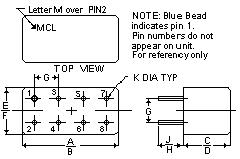The TS-930 and TS-940 series rigs arguably are the finest HF transceivers which use through-hole, rather than SMT construction that Kenwood ever built.
They'll do almost everything one could ask for...except receive two frequencies at once, a la the '950 or FT-1000D, and at the same time be computer-controllable.
Here's the beginning of a mod series which will rectify that.
First, we're going to need a method by which to share the antenna connection - as the TR7/R7 and TS-820S/R-820 can do. As delivered from Kenwood, the '940 has an RCA connector on its rear panel titled "External Receiver". A switch allows routing the main station antenna to the '940's internal receiver or to an external unit. But not both at once.
Looking at the layout of the rig and its rear panel with the bottom cover off, one finds a 'Remote/Internal' switch and miniature coax leads running to the common and rightmost connections, and a wire running from the RCA jack next to it to the third switch terminal.
To make the External Receiver connection "always active", one needs to unsolder the larger of the two coax cables which connect to the switch and move it to the rightmost switch connection - tied to the other coax cable. The wire to the RCA connector is then tied to the center terminal of the switch. The switch itself can be used to turn the connection to the external receiver "off" if ever desired.
The best approach to feeding both internal and external receivers would be via the inclusion of one of the following Mini-Circuits power splitters, as they would minimize impedance losses caused by connecting both receivers together with no form of matching network:
These offer 30dB isolation between ports and are usable from 0.004 to 60MHz.
I'm going to order one for each of my '940s. When I install one I'll post pics and details.
One person on the TS-930S Yahoo group indicated this was also a viable mod for the '930, so the instructions I've presented above may be adapted as necessary. I'm not sure how its rear panel is laid out.





 Reply With Quote
Reply With Quote


